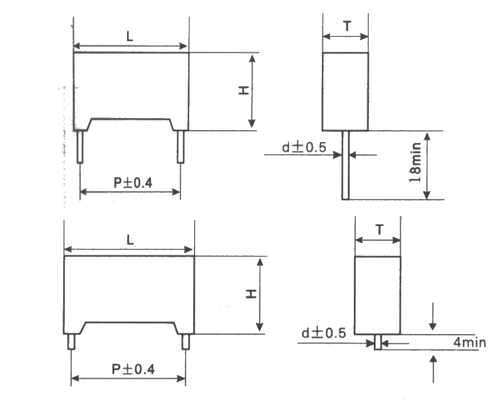The two ends of the film and the foil are formed by winding the polypropylene film into a cylindrical capacitor. The principle of polar capacitance and nonpolar capacitor is the same, they both store charge and release charge; the voltage on the electrode plate cannot change suddenly.
The difference lies in the different media, performance, capacity, structure, resulting in different use environment and use. On the contrary, according to the needs of production practice, people have experimented and manufactured capacitors with various functions to meet the normal operation of various electrical appliances and the operation of new equipment. With the development of science and technology and the discovery of new materials, a variety of capacitors will emerge.
1. Different media
What is the medium? To put it bluntly, it is the substance between the two plates of a capacitor. Most of the polar capacitors use electrolyte as dielectric material, usually the same volume of capacitance has polar capacitance, and the capacitance has large capacity. In addition, the capacity of the same volume of polar capacitance produced by different electrolyte materials and processes will be different. There is also a close relationship between the pressure and the use of dielectric materials. There are many non-polar capacitor dielectric materials, most of which are metal oxide film and polyester. Because of the reversibility or irreversibility of the dielectric, the use environment of the polar and nonpolar capacitors is decided.
2. Different performance
Performance is the requirement of use. If the metal oxide film capacitor is used as filter in the TV set, the capacitor capacity and withstand voltage required by the filter should be met. I'm afraid there is only one power supply in the cabinet. Therefore, as a filter, only polar capacitor can be used, which is irreversible. Most of the nonpolar capacitors are below 1 micro farad, which participate in resonance, coupling, frequency selection, current limiting, etc. Of course, there are also large capacity and high voltage withstand, which are mostly used in power reactive power compensation, motor phase-shifting, and frequency conversion power supply shifting.
3. The structure is different
In principle, regardless of discharge, any shape of capacitance required by the environment can be used. Usually, the electrolytic capacitor (with polarity) is round, and square type is rarely used. The shape of the nonpolar capacitor is changeable. For example, tube type, deformed rectangle, sheet type, square type, circular type, combined square type and circular type, etc., depending on where they are used. Of course, there is intangible. Here intangible refers to the distributed capacitance. The distributed capacitance can not be ignored in high frequency and intermediate frequency devices.








